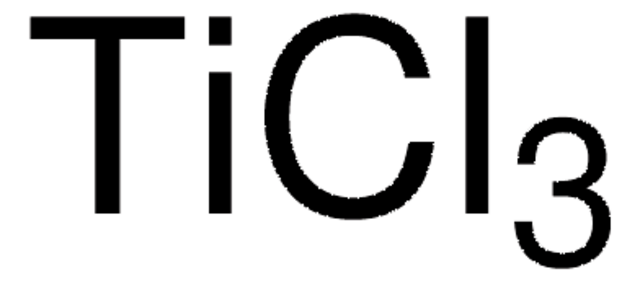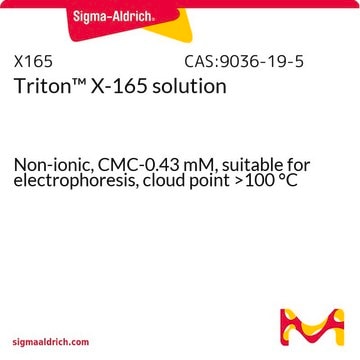249998
Titanium(III) chloride solution
~10 wt. % in 20-30 wt. % hydrochloric acid
Sinónimos:
Titanium trichloride
About This Item
Productos recomendados
reaction suitability
reagent type: catalyst
core: titanium
concentration
~10 wt. % in 20-30 wt. % hydrochloric acid
density
1.192 g/mL at 25 °C
SMILES string
Cl[Ti](Cl)Cl
InChI
1S/3ClH.Ti/h3*1H;/q;;;+3/p-3
Inchi Key
YONPGGFAJWQGJC-UHFFFAOYSA-K
¿Está buscando productos similares? Visita Guía de comparación de productos
signalword
Danger
hcodes
Hazard Classifications
Eye Dam. 1 - Met. Corr. 1 - Skin Corr. 1B - STOT SE 3
target_organs
Respiratory system
Storage Class
8B - Non-combustible corrosive hazardous materials
wgk_germany
WGK 3
flash_point_f
Not applicable
flash_point_c
Not applicable
ppe
Faceshields, Gloves, Goggles, type ABEK (EN14387) respirator filter
Elija entre una de las versiones más recientes:
¿Ya tiene este producto?
Encuentre la documentación para los productos que ha comprado recientemente en la Biblioteca de documentos.
Nuestro equipo de científicos tiene experiencia en todas las áreas de investigación: Ciencias de la vida, Ciencia de los materiales, Síntesis química, Cromatografía, Analítica y muchas otras.
Póngase en contacto con el Servicio técnico







